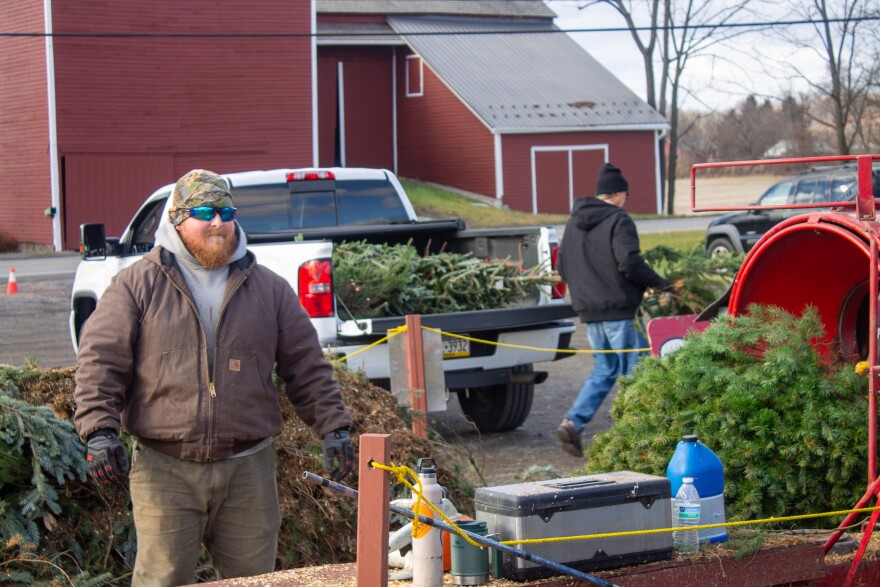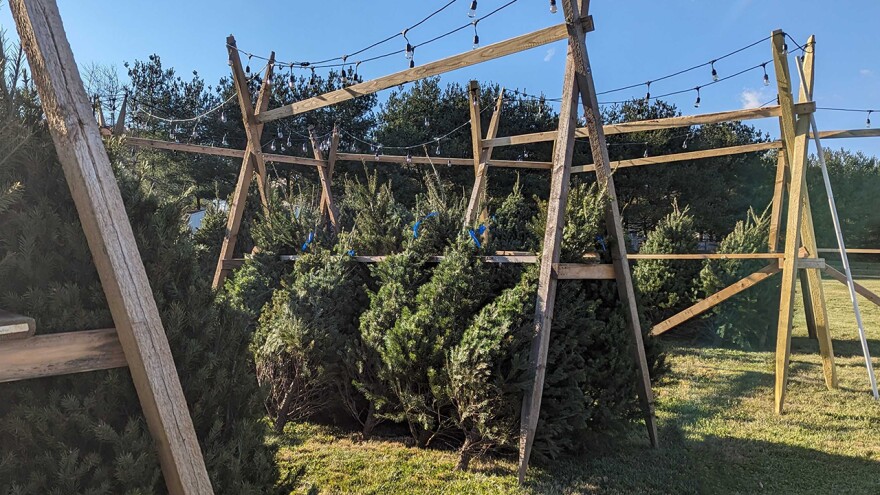BETHLEHEM, Pa. — There are countless ways a live tree can be reused after its functional holiday use is over, Rob Christopher said.
“From mulching it, many livestock animals eat them, especially goats, to people using them on their properties as shelter for birds and other small mammals – the list goes on,” said Christopher, Easton’s arborist and conservation manager. “So, even though I hate to see any tree being cut down, especially for human needs for just a few weeks, this is undeniably much more ‘green’ than choosing an artificial tree.”
It might seem counterintuitive, but harvesting holiday trees year after year is better for the environment than using an artificial one, experts said, especially amid the proliferation of plastic piling up in landfills.
Not only does buying local, live trees support area farmers, but they’re also recyclable. In contrast, making and shipping artificial trees, many made from metals and plastics, create more carbon emissions, a key driver of climate change.
“An artificial tree will create up to 10 times higher amounts of carbon [emissions] than the harvesting of a live Christmas tree. Once in a landfill, it will take thousands of years to fully break down.”Rob Christopher, Easton’s arborist and conservation manager
“An artificial tree will create up to 10 times higher amounts of carbon [emissions] than the harvesting of a live Christmas tree,” Christopher said. “Once in a landfill, it will take thousands of years to fully break down.”
‘New plastic is just not as nostalgic’
About 10 million artificial trees are purchased country-wide each holiday season, according to the Nature Conservancy.
“Nearly 90% of them are shipped across the world from China, resulting in an increase of carbon emissions and resources,” according to the Virginia-based nonprofit. “And because of the material they are made of, most artificial trees are not recyclable and end up in local landfills.
“Not to mention the smell of new plastic is just not as nostalgic as a crisp, fresh evergreen.”
The average family uses an artificial tree for only six to nine years, according to the National Christmas Tree Association, a trade association representing the holiday tree industry. After that, it’s generally headed to a landfill.
“That’s a pretty hefty, long-term environmental burden,” according to the association.
However, if residents already have an artificial tree, there are ways to extend its usefulness.
“Many people use them for much more than Christmas now,” Christopher said. “Retail stores hang them upside down and use them as display pieces to hang merchandise from and you can use a craft paint to respray them a different color if that helps serve your purpose to extended usage.”
They can also be donated, he added.
“If they are still in decent condition, consider donating them to a local organization that helps the less fortunate and or if your local thrift shop accepts them,” he said. “Where there’s a will, there’s a way if you want to try to keep it out of a landfill.”
‘Promoting green, sustainable practices’
Live trees, especially in recent years, have far outpaced the popularity of artificial trees.
Between 25 and 30 million live Christmas trees are sold in the U.S. every year, according to the National Christmas Tree Association.
This season, the Lehigh Valley experienced another year of tree shortages, with local farmers shuttering their businesses early. Some have blamed weather, supply chain issues and COVID-19, but there’s also been a marked increase in demand.
For example, after COVID-19-related lockdowns, Christmas tree sales jumped 15% from 2021 onward at Unangst Tree Farms in Bath.

And the benefits of choosing local, live trees are many, experts said.
“Our local Christmas tree farms not only help local economies, they benefit the environment by promoting green, sustainable practices, create experiences for us humans that last a lifetime and benefit wildlife for up to eight years before they are harvested, as many native bird species will nest in them, help with stormwater runoff on the farms, O2 [Oxygen] production, carbon sequestering, the capture of pollution particles and aides in soil health,” Christopher said.
It’s also possible for residents to grow their own trees — it just takes a few years.
“For those that might have a small piece of property, they can also grow their own Christmas trees by starting out with a small group the first year, of say five, then every year plant another group of five,” he said. “They will just need to be trimmed tightly once a year after they flushed out their new growth to promote a dense pyramidal shape.
“This would provide trees for five different households every year as each new crop is ready to harvest. Just a thought for those willing to utilize their property in a sustainable manner.”
Looking to cut your holiday tree? Discover Lehigh Valley has a list.


